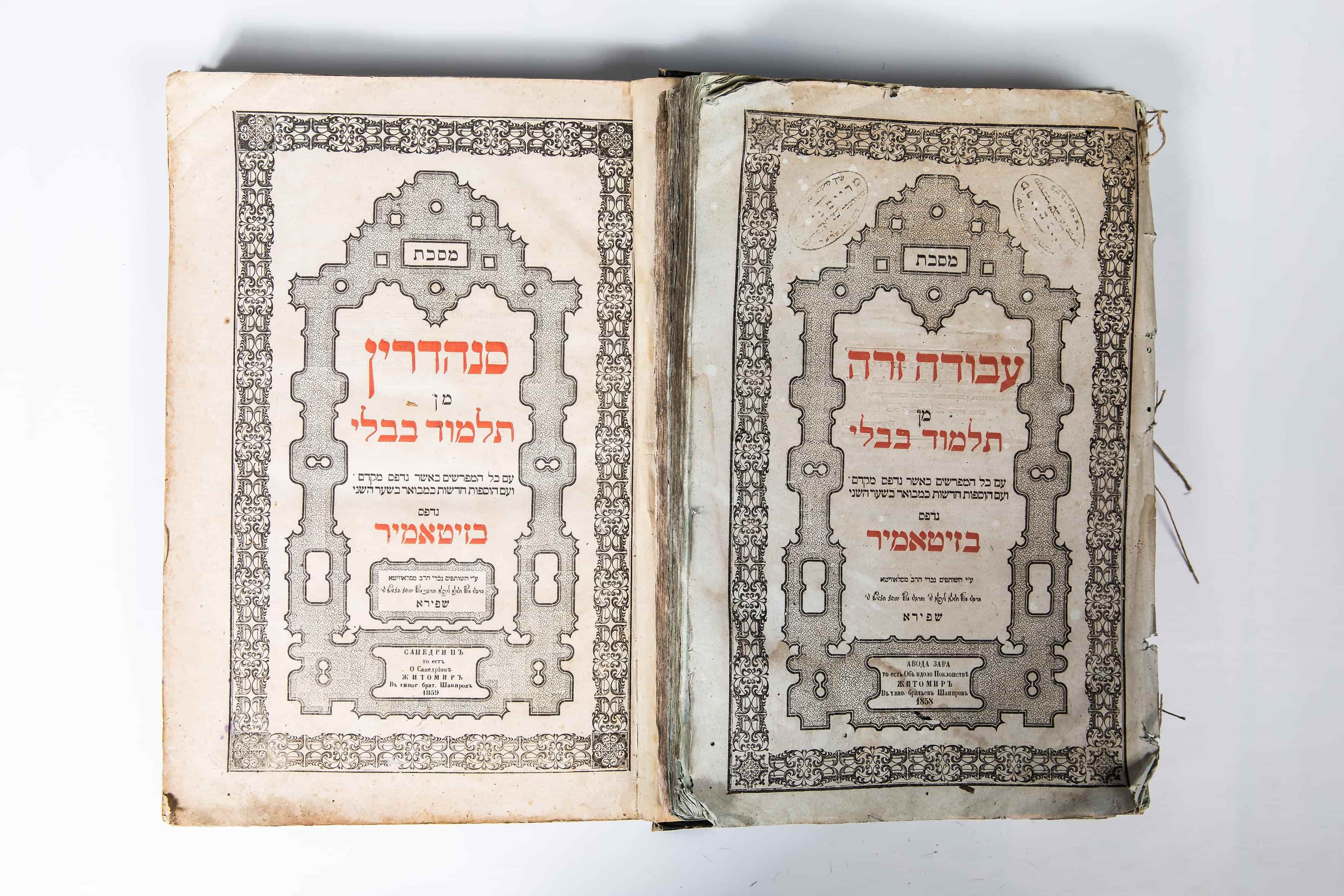Museum “Jewish Memory and Holocaust in Ukraine” owns one of the largest collections of Judaic objects in Ukraine and Central Eastern Europe. A special place in it belongs to unique religious publications, the history of which dates back almost two centuries.
Each of them is a kind of treasury and at the same time a source of G-d's Wisdom. At the same time, the editions are quite rare bibliographical monuments with their own history, dramatic vicissitudes of creation and existence. Such artifacts include the treatises that were published by the Shapiro brothers in the middle of the 19th century.
The Shapiro Brothers Publishing House is one of the most famous European printing houses, publishing a variety of Jewish literature. However, its most important achievement was the repeated publication of the Babylonian Talmud. Thanks to the meticulous work and exceptional printing quality, the books of the Shapiro Publishing House quickly became famous throughout Central and Eastern Europe and took an honorable place in the book collections of many Jewish communities and religious educational institutions far beyond the borders of modern Ukraine.
The legendary founder of the publishing house was Moshe Shapiro (1762–1839), the rabbi of the town of Slavuta, Zaslavskyi district, Volyn province (now Slavuta city, Khmelnytskyi region). To spread the wisdom of Hasidism, Rebbe Shapiro managed to obtain permission to establish a printing house in 1791 from the then ruler of Slavuta, the Polish magnate Prince Eustace Sanguszko. Despite the fact that in 1793, as a result of the Second Partition of the Polish-Lithuanian Commonwealth, Slavuta became part of the Russian Empire, the printing house not only did not disappear, but also became the place where in 1797 (according to some sources, in 1796) one of the most important works for the entire Hasidic movement was published – “Tania” (“Likkutei Amarim”) by Shneur Zalman of Lyad (Alter Rebbe) (1745–1812).
In 1803–1806, the printing house in Slavuta produced its own first edition of the Babylonian Talmud. Almost immediately, books from the Shapiro publishing house were distributed throughout Jewish communities and instantly became a desired bibliographic rarity for many. Given the success, in 1808 the publishing house began work on the second edition of the Talmud, all parts of which became available to readers in 1813.
Later, in 1823, the Slavuta publishing house presented the world with the third edition of the Babylonian Talmud. In general, such activity of the publishers from Slavuta was a unique phenomenon in religious book publishing, because within two decades, 3 large-scale multi-volume treatises were prepared, as well as a large number of other Jewish texts, which, due to their quality, enjoyed unquestionable authority and demand not only in the Hasidic environment, but also among the Jewish communities of Lithuania and part of Belarus, which were in a kind of theological opposition to Hasidism – the so-called “misnagdim”.
From 1823, the publishing house was run by the sons of Rebbe Moshe, the Rebe Shmuel Shapiro (1784–1863) and the Rebe Pinchas Shapiro (1792–1872). On the one hand, they managed to expand their father's business (for example, Slavuta opened its own paper mill, which not only provided printing materials but also provided work for a significant number of Slavuta residents), on the other hand, the Shapiro brothers suffered numerous trials: the tightening of tsarist censorship in the field of publishing religious books, unfair accusations and, as a result, punishment in the form of many years of hard labor and exile, but most importantly, the death in prison of their father, the Rev. Moshe Shapiro.
In 1845, the imperial authorities introduced additional restrictions on Jewish books. According to the Regulations on Jewish Printing Houses, the latter could only exist in two cities of the Russian Empire – Vilna (now Vilnius, Lithuania) and Zhytomyr. In view of this, the Shapiro brothers' publishing house was forced to move from Slavuta to Zhytomyr. It is also worth noting that from the moment the Regulations were announced, the activities of Jewish printing houses were under the supervision of the Ministry of Public Education, which also had the right to dispose of the property of publishing centers that existed before 1845. For the Shapiro brothers, this meant the de facto nationalization of their property. Despite this, Mr. Shmuel Shapiro and Mr. Pinchas Shapiro did not give up their life's work, obtained the right to lease the printing house and successfully resumed its activities in a new location.
It is here in Zhytomyr another edition of the Babylonian Talmud appears, some parts of which are presented in Museum “Jewish Memory and Holocaust in Ukraine”. In particular, visitors can see and familiarize with the treatise “Avoda Zara” (from Hebrew “another service”) (1858 edition) – a part of the Talmud that outlines the rules of coexistence between Jews and peoples who practiced paganism (in particular, the text details the prohibition of idolatry, etc.), as well as “Sanedrín” (from Hebrew “joint meeting”) (1859 edition) – a treatise that established the rules of traditional Jewish criminal and criminal procedural law.
So, as you can see, these majestic volumes in museum showcases are not only a source of religious wisdom, but also a way to learn about the unique history of Jewish communities in Ukrainian lands and its prominent figures.
Yehor Vradii

